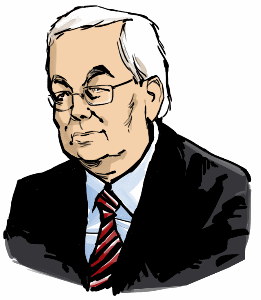Foreword.
The most popular American 19th century poet, Henry Wadsworth Longfellow (1807-1882), translator of Dante’s Commedia and Harvard professor, spent several years in Europe. He spoke several European languages and, according to Wikipedia, studied Icelandic and Norse mythology.
Today I had occasion to look up his translation of Dante’s Commedia and was struck by certain aspects thereof as well as of Longfellow’s poem entitled Six Sonnets on Dante’s Comedy. The first two sonnets provide a lead-in to Longfellow’s mention in the first three lines of the third Sonnet of some anonymous poet with whose steps Longfellow was striving to “keep pace”.
In the context of “hidden – encrypted – poetry” in the Augustan-Saga-Shakespeare literary tradition, it is fair surmise that Longfellow’s study of Icelandic and Norse mythology and his intellectual associations in Europe over a few years, had acquainted him with the technique of tailoring poetic texts so as to have their Cipher Value signal the poet’s familiarity with the Augustan-Saga-Shakespeare literary tradition.
The Cipher Values of the first three lines of Sonnet III –
12805 = I enter, and I see thee in the gloom
16159 = Of the long aisles, O poet saturnine!
21741 = And strive to make my steps keep pace with thine.
50705
– are evocative of three key Cipher Values in the Saga-Shakespeare Opus that relate to End-of-the-World imagery, namely, (i) Sweet Swan of Avon, 10805. (ii) Ártíð Snorra fólgsnarjarls, 13159, and (iii) Þórir jökull, 7141. In Sturla Þórðarson’s account in Íslendinga saga (Saga of Icelanders) of what purports to be the single bloodiest battle of the Sturlunga Age in 13th century Iceland, the climactic point is the poem cited by Þórir jökull as he is about to have his head chopped off:
9007 = Upp skalt á kjöl klífa,
8028 = köld es sjávar drífa,
10034 = kostaðu hug þinn herða,
10215 = hér muntu lífit verða.
9445 = Skafl beygjattu, skalli,
10205 = þótt skúr á þik falli,
7662 = ást hafðir þú meyja.
11451 = Eitt sinn skal hverr deyja.
76047
A man’s “head” being chopped off signals Death/Rebirth, and in the last line Þórir jökull calmly accepts his “death”, knowing that “rebirth” will follow through “consummation” on Kjölr. In Icelandic, kjölr has two meanings: 1. A ship‘s keel and 2. A part of Iceland‘s interior which has been identified by an Italian researcher as the locus of Virgin Beatrice in Dante‘s Commedia.
With this in mind, I soon determined that the Cipher Value of the first three lines of Longfellow’s third sonnet is linked to that of Þórir jökull’s poem as follows: 50705 + 11359 + 9814 + 1796 + 7000 – 4627 = 76047. Here the poet’s pending fate is linked to that of Snorri Sturluson, 11359, Sturla Þórðarson, 9814, and a Quest of the Holy Grail/Graal, 1796, with the newly decapitated poet “rising from the sea” as New Earth/Microcosmos, 7000. This concept relates to Creation/Man in the Image of God become “free” of the “mortal coil” of Time/Tími, 2315, and Space/Rúm, 2312, as in minus (2315+2312=) 4627.
In the context of this scenario the first part of Longfellow’s poem, 572,300, is presumptive evidence of its having been tailored to link its cipher value to that of Sturla Þórðarson’s listing at the end of his chapter of the individuals who were allegedly killed at the battle of Örlygsstaðir, 552053 as in 552053 + 1000 + 11931 + 7316 = 572300, where
1000 = Light of the World – Our Ever-living Poet
11931 = Saga Cipher Key – Key to Light of the World’s “hidden poetry”
7316 = Sturla lögmaðr – Sturla Man of Law – Poem Perfected
“Sturla lögmaðr” is used once in the literature to refer to Sturla Þórðarson – towards the very end of the brief “biographical” Sturlu þáttr, which concludes with an account of his funeral arrangements.
Þórir jökull is not named in Sturla Þórðarson’s listing of those who were killed at Örlygsstaðir. If this was meant to signal that the killing of Þórir jökull was mythical and not historical in nature, the question arises why Sturla’s account of Snorri Sturluson’s “murder” on 23 September 1241 should be taken at face value.
***
Longfellow’s Sonnets I – III
I
15200 = Oft have I seen at some cathedral door
15197 = A laborer, pausing in the dust and heat,
19879 = Lay down his burden, and with reverent feet
17167 = Enter, and cross himself, and on the floor
16748 = Kneel to repeat his paternoster o’er;
18207 = Far off the noises of the world retreat;
17719 = The loud vociferations of the street
14113 = Become an undistinguishable roar.
12709 = So, as I enter here from day to day,
16293 = And leave my burden at this minster gate,
16359 = Kneeling in prayer, and not ashamed to pray,
17415 = The tumult of the time disconsolate
17708 = To inarticulate murmurs dies away,
17731 = While the eternal ages watch and wait.
232445
II
28314 = How strange the sculptures that adorn these towers!
23614 = This crowd of statues, in whose folded sleeves
24230 = Birds build their nests; while canopied with leaves
21839 = Parvis and portal bloom like trellised bowers,
22461 = And the vast minster seems a cross of flowers!
17768 = But fiends and dragons on the argoyle eaves
22826 = Watch the dead Christ between the living thieves,
19576 = And, underneath, the traitor Judas lowers!
15440 = Ah! From what agonies of heart and brain,
19883 = What exultations trampling on despair,
25152 = What tenderness, what tears, what hate of wrong,
19694 = What passionate outcry of a soul in pain,
16049 = Uprose this poem of the earth and air,
12304 = This mediaeval miracle of song!
289150
III
12805 = I enter, and I see thee in the gloom
16159 = Of the long aisles, O poet saturnine!
21741 = And strive to make my steps keep pace with thine.
50705
I + II + III = 232445 +289150 + 50705 = 572300.
***
Men killed at Örlygsstaðir
(Íslendinga saga, 138. k.)
29625 = Þessir menn létust á Örlygsstaðafundi með þeim er ór sárum dóu:
22464 = Sturla Sighvatsson vestan, Árni Auðunarson,
28882 = Snorri Þórðarson, Vigfúss Ívarsson, Ormr Halldórsson,
32913 = Marteinn Þorkelsson, Markús Þorgilsson, Gizurr Þórarinsson,
22820 = Hermundr Hermundarson, Þórir Steinfinnsson,
22748 = Valdi ok Áskell Skeggjasynir, Bersi Þorsteinsson,
23920 = – ór Vestfjörðum: Krákr ok Sveinbjörn Hrafnssynir,
27408 = Markús Magnússon, Helgi Sveinsson, Þórðr Guðmundarson,
19253 = Eindriði smiðr, Þórðr Hallkelsson ok Ámundi,
23047 = Ögmundr Kolbeinsson, Jón kaupi, Dálkr Þorgilsson,
29008 = – en norðan: Sighvatr Sturluson, Þórðr ok Markús, synir hans,
23230 = Sighvatr Runólfsson, Ingjaldr stami, Þórðr daufi,
27632 = Einarr Ingjaldsson, Björn Gizurarson, Björn Þórarinsson,
26634 = Eyjólfr, Guðmundr Halldórsson, Sámr, Þórðr Eysteinsson,
21764 = Eiríkr Þorsteinsson, Björn Þorgrímsson,
23985 = – en lengra norðan: Kolbeinn Sighvatsson, Páll Magnússon,
22645 = Þorgeirr Bjarnarson, Oddr Kárason, Skeggi Hallsson,
20496 = Sigurðr Guðmundarson, Brandr Þorkelsson,
17678 = Brandr Einarsson, Ljótr, Loðinn Helgason;
24363 = – þessir létust af Gizuri: Játgeirr Þórarinsson,
27260 = Sigfúss Tófason, Þorlákr Barkarson, Þorgils Steinason,
34278 = Þórðr Snorrason, Þorbjörn, Þóroddr, húskarl Teits Þorvaldssonar.
552053
As in 552053 + 1000 + 11931 + 7316 = 572300 (see Foreword).
***
Reiknivél sem umbreytir stöfum í tölugildi er á netinu:
http://www.light-of-truth.com/ciphersaga.htm

 Gunnar Tómasson
Gunnar Tómasson